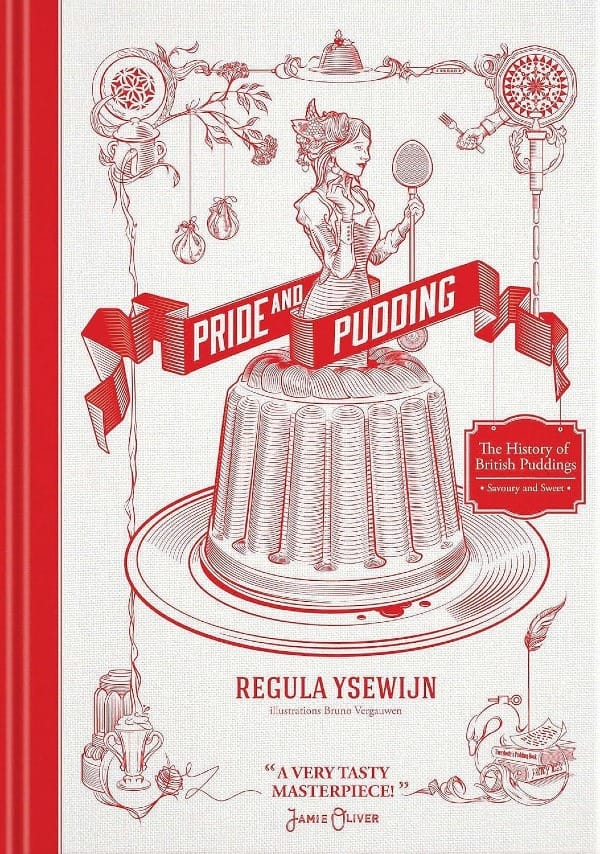Courgette gluts, books, and food events
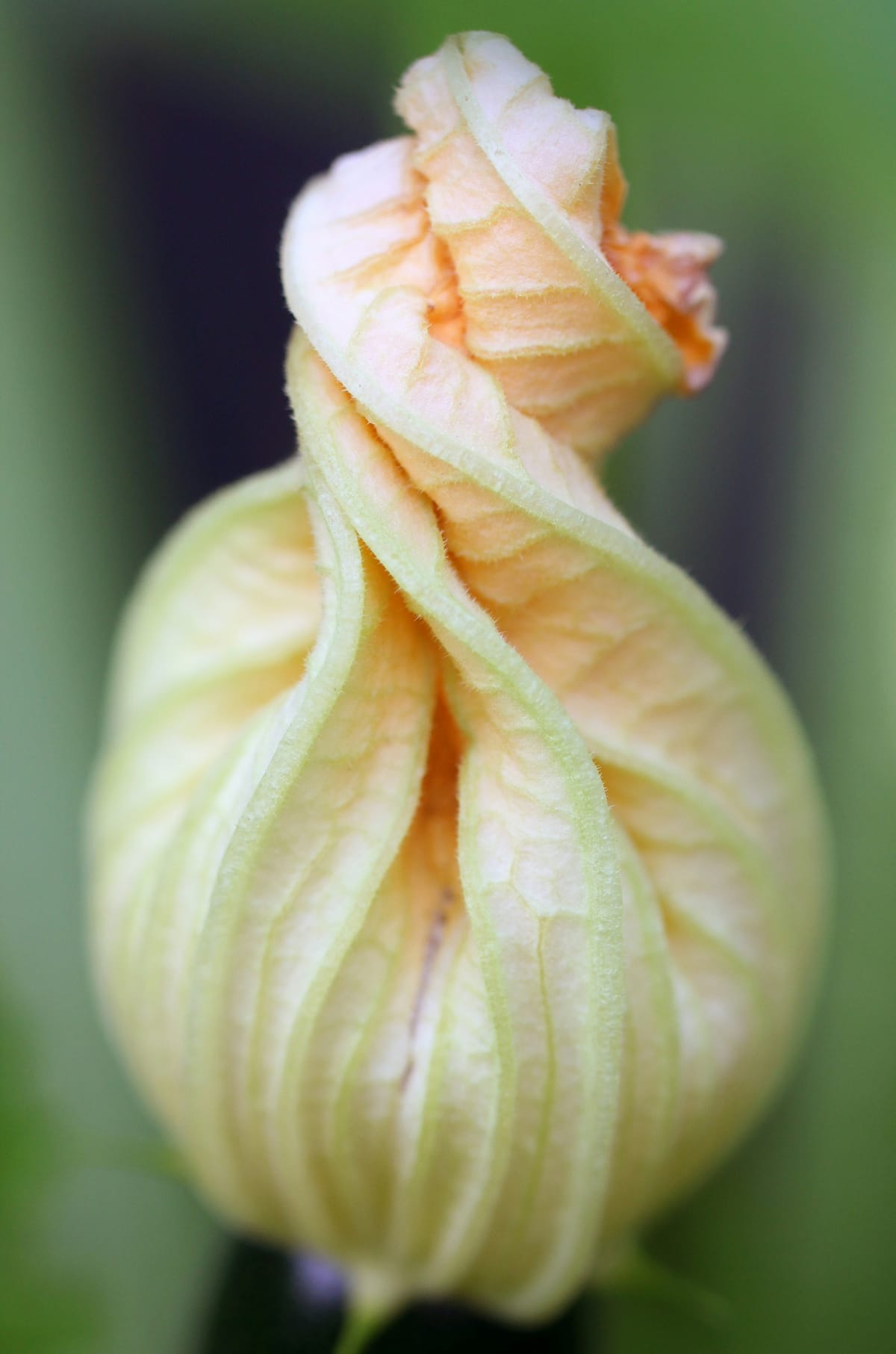
Everything I discussed during my food slot on yesterday’s Suffolk Sounds Radio show with host Karen Cannard (06/08/2025). You can listen again until Wednesday, August 13th.
This post is too long for email; you’ll need to click on the link to read it all. The book links go to my bookshop.org page. I earn a small commission if you buy from them.
Quite simply, the most stunning and innovative seasonal ice cream flavours, many of them small batch, all of them sold in East Anglian stores, and at events (i.e. the recent Little Earth Festival hosted by the White Horse Pub in Edwardstone). I buy their ice cream from Two Sevens Deli in Sudbury, Frankie’s Studio in Hadleigh, and The Whole Food Store in Manningtree.
Maiz, the Latin-American cafe in Manningtree, is a new stockist. In July I visited the Streets Alive! Festival and Maiz were selling little tubs of horchata custard ice cream. Other flavours are available: a chocolate, cinnamon & almond (inspired by the chocolate shops in Oaxaca City or banana, muscovado and rum ice cream, and a pineapple & lime sorbet.
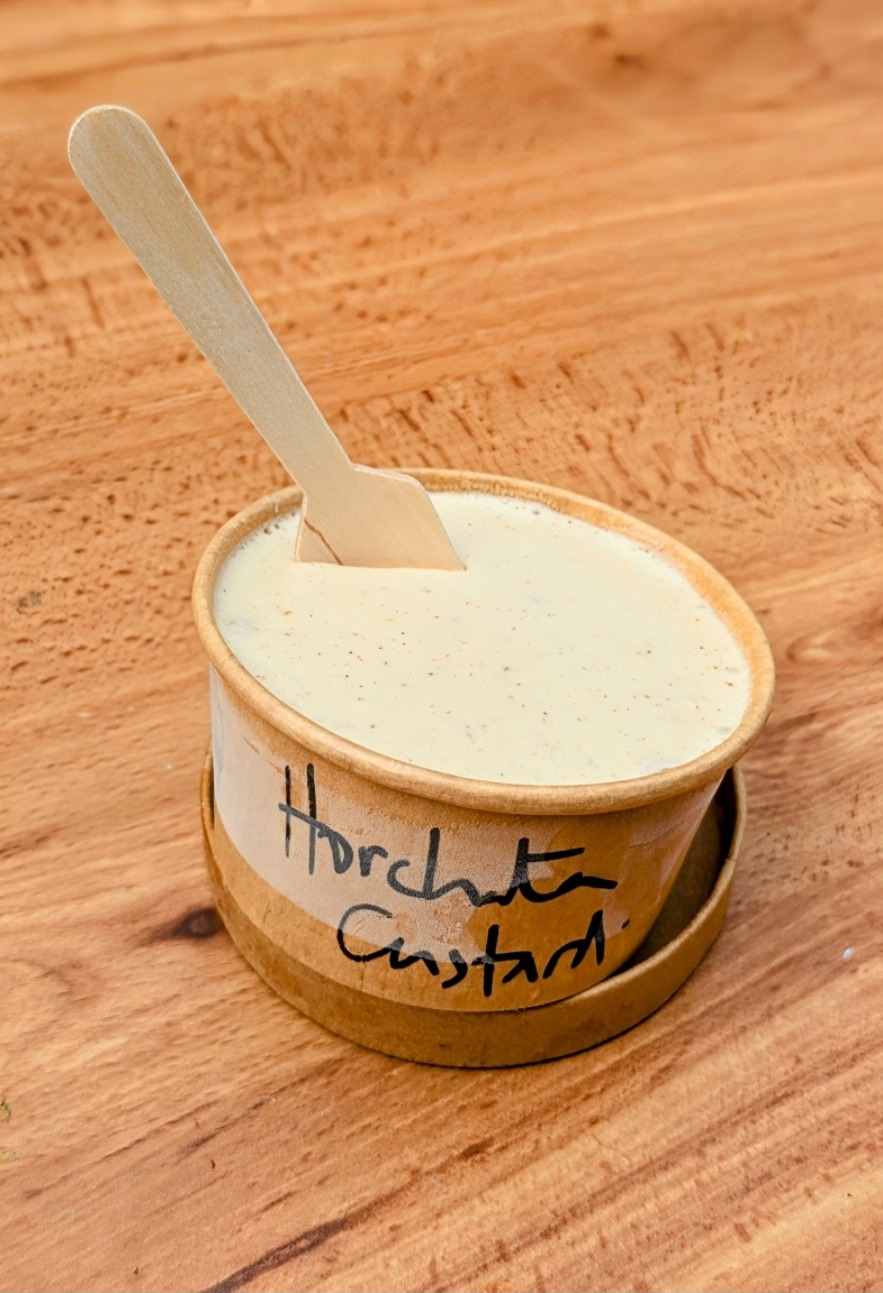
Tornado’s flavours read like poetry: mint with blackcurrant ripple; roasted pear and walnut brittle; a profound mulberry; delicate honey and magnolia (some magnolias have edible flower petals; they taste gingery); nectarine and lemon sorbet; a rich, dark prune and armagnac; a rustic toasted buckwheat; Guinness bread and molasses; strawberry passionfruit; and a light-as-air olive oil and lemon. Tornado Ices, if you are reading, PLEASE can we have a stockist in Bury St Eds?
Sugartown Toys has just opened. (Bury St Eds was nicknamed ‘Sugartown’ after its huge sugarbeet processing factory.) It has a wonderful selection of food-related toys. I was given a wooden taco truck for my birthday, made by a company called Candylab. Here it is:
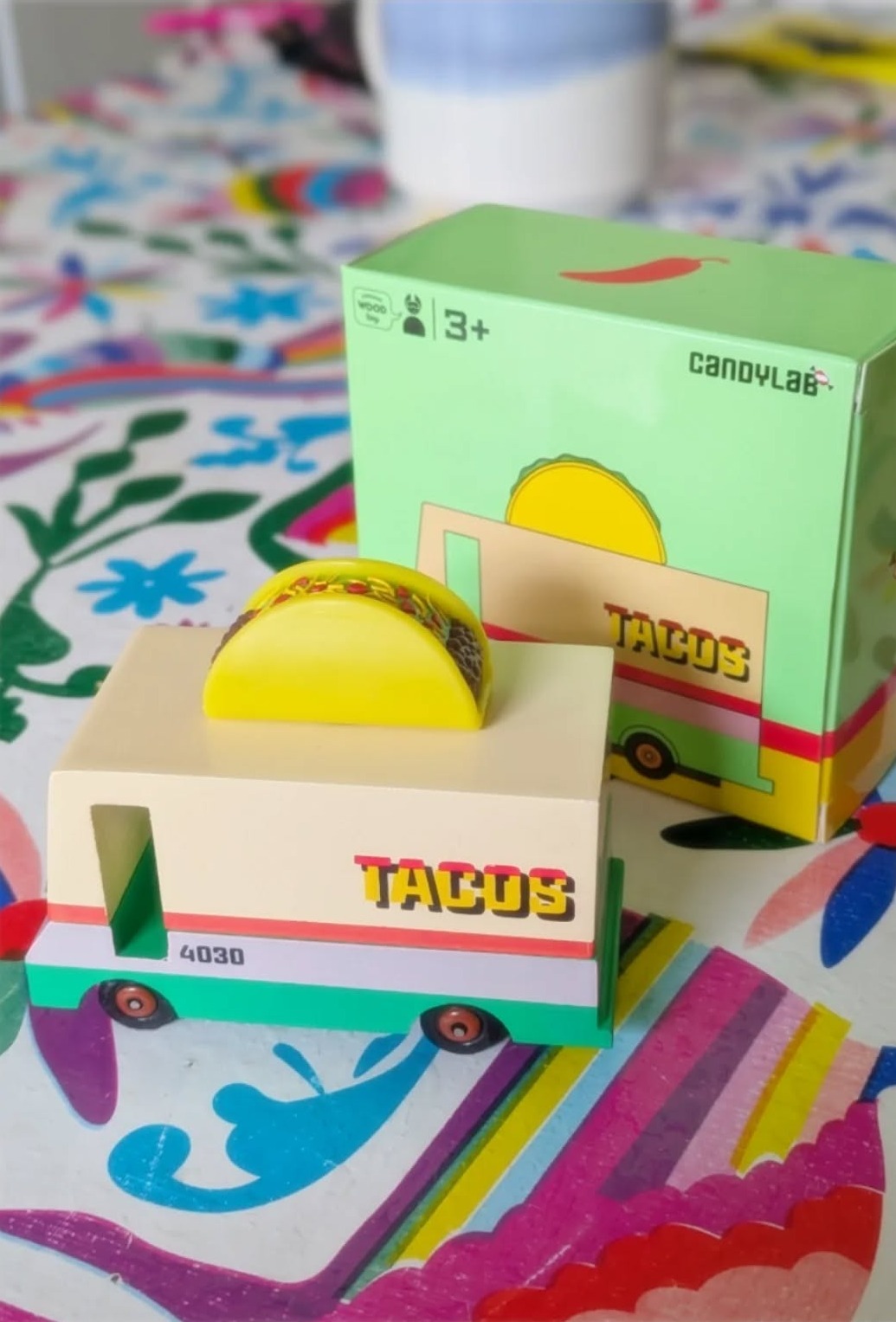
Sugartown Toys stocks other Candyland trucks, including an ice cream van and a hot dog truck. I adore the boxes of wooden classic biscuits, baskets of toy fruit and vegetables, tea sets, and food-themed books.
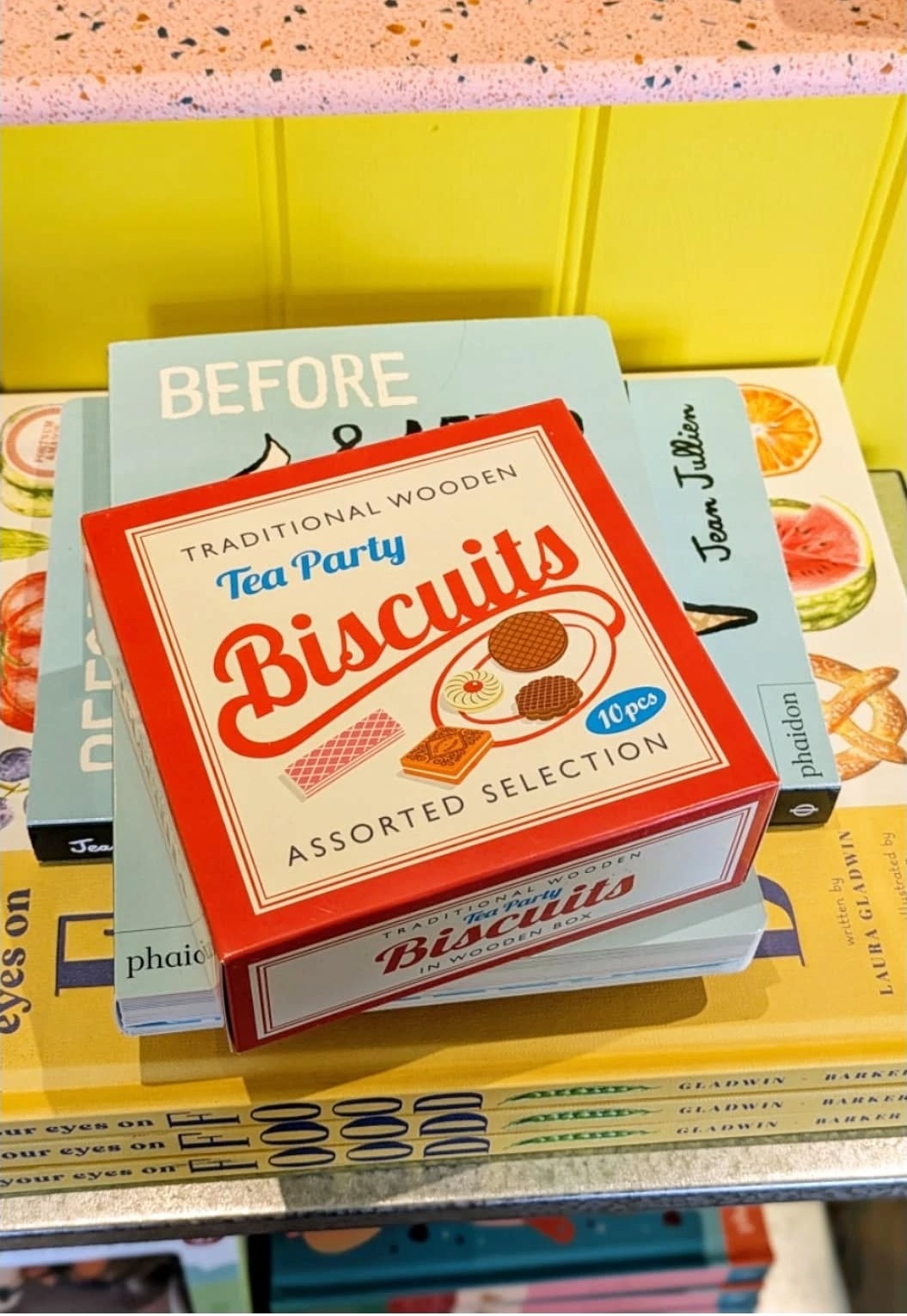
Upcoming events:
On 11th October, I am chairing a talk between two amazing food writers, Olia Hercules and , part of the Bury St Eds literature festival. We’ll be discussing Olia and Felicity’s latest books and the subject of bread, food and resistance in Ukraine. Book via the festival’s website.
The Bury St Edmunds Food & Drink Festival will take place on 24th Aug 2025 - 25th Aug in venues across the town centre. Expect live food and drink demonstrations at the Chefs on Stage Cookery Theatre on Cornhill, with favourite local chefs and drinks experts (including Giggling Squid, Bellota, Rustico, 1921, The Wine Cellar, and Angel Hotel) plus a special appearance by chef Ching-He Huang on Monday 25th August. There’s a food market on Angel Hill, stalls on Buttermarket and Cornhill, and kids' events in and around the Arc shopping centre.
Saturday, August 23: Beer and Distillery Tour at Humber Doucy Brewery and Heart of Suffolk Distillery. Transport between the two is provided; check Heart of Suffolk’s website and socials for details or book here.
Sunday, 24 August: Sunday Roast and rum punch for Ages 18+ at AMPP Studio, 11 Dove Street, Ipswich, with nine hours of house beats and carnival feels. £7.50 online, £10 on the door (entrance only). Book here.
Loads of events at the Food Museum, including Food Not Cuts in Abbot’s Hall Dining Room, exploring how food and care are connected. The exhibition highlights how cuts to care and a lack of support can make accessing food difficult for deaf, disabled and neurodivergent people. Learn about disabled people’s experience of sourcing, cooking and eating food through a series of cooking workshops delivered at the Food Museum, plus a digital sound intervention and art displays. Also, The School Pudding workshop is on until Aug 29th. The Food Museum has restored the bridge to the old fishing lodge. Visitors can book an afternoon tea there. £30 per person (min 2 people) to have the lodge and island to yourselves for 2 hours. You’ll be served a picnic hamper including a historically accurate selection of sandwiches and cakes.
New books I’ve been reading:
Izzedeen Alkarejeh and Eman Aburabi own Cork-based Cafe Izz, and they've just released Jibrin, their first cookbook, named after Beit Jibrin, Eman's family hometown in Palestine.
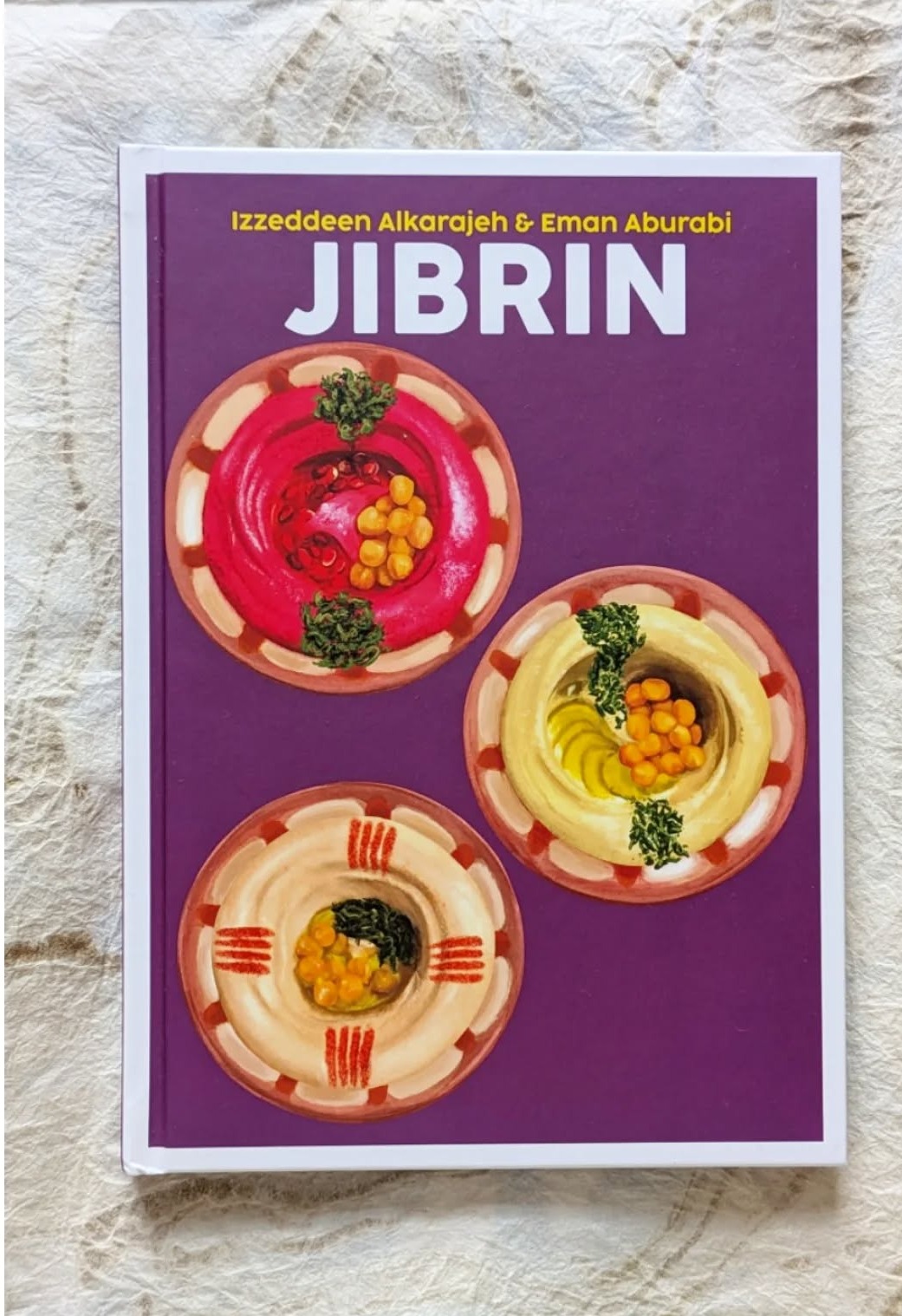
Izzedeen and Eman collaborated with chef Habib Alostaz to record recipes for the food they grew up eating. "In many ways, our lives as Palestinians illustrate the diaspora caused by occupation and exile; countless families born in different regions, yet bound by the same culture and traditions," they write of their first meeting. "Under normal circumstances, we might never have met, as none of us are free to visit each other's hometowns due to ongoing restrictions and segregation. Yet in our shared kitchen we discovered each other's culinary heritage." Jibrin is testament to the strength and resilience of Palestine culture, they say.
Here are some of the gorgeous recipes:
-Makdous (pickled baby aubergines)
-Paddystinian Balls with Chilli Sauce ( a playful tribute to Ireland's potatoes; they’re mashed, seasoned with Gazan chilli sauce, mixed with mozzarella, rolled into balls then coated in crushed Taytos and fried)
-Maftoul (Palestinian couscous)
-Sumagiyya ( Palestinian sumac stew)
-Khalili Qidreh (Hebronian lamb and rice)
-Aish As-Saraya ( Palestinian bread pudding)
-Qatayef (stuffed Arabic pancakes)
There's a poignant essay about Malva parviflora (wild mallow), a plant that has nourished generations of Palestinians through hardship. It's used in a stew called Khubbeizeh. I grow it in my garden, but I didn't know about its critical importance. It reminded me of horta, the steamed greens eaten in Greece with a similar history rooted in wartime hunger and starvation. I hope someone will commission Izzedeen and Eman to write more about this.
During the show I discussed how we all need to play a part in protecting Palestinian culture during the ongoing genocide by purchasing, cooking from, and publicising books like this. Jibrin is the latest in the gorgeous series by Blasta Books and is illustrated by Ciara Coogan.
OPA: Recipes inspired by Greek Tavernas by Helena and Vikki Moursellas is a perfect evocation of Greece; its blue and white illustrative cover and delectable photographs are transporting in the best way.
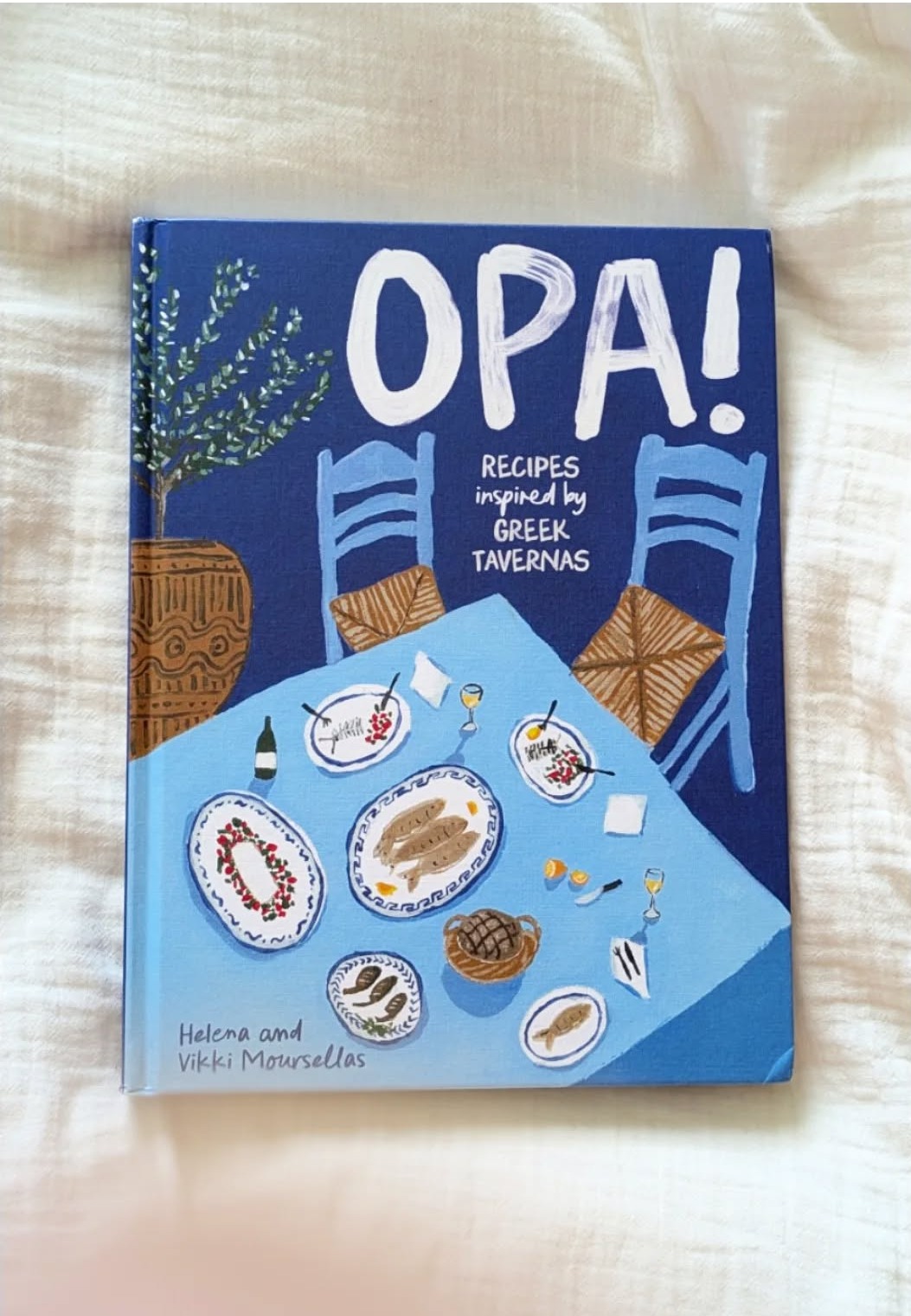
‘OPA’ is a phrase that captures the warmth of Greek culture, an expression that can carry many meanings based on the context it’s used in – from joy to excitement, celebration to surprise. This book arrived just days after I’d returned from Santorini, where I visited the Santorini Tomato Industrial Museum (GO!). I’d been pining for Greece and its food.
There are 80 recipes; these leapt out:
-Stuffed fried olives
-rice stuffed zucchini flowers
-rye confit garlic taramosalata
-filo-fried feta with honey and nuts
-clams with lemon rice
-baked chickpeas
-hilopites with chicken ( square pasta)
-maroulosalata ( lettuce salad)
-beetroot with mizithra cheese
-patates lemonates ( because the Greeks are the best potato cooks in the world)
-galaktoboureko with walnuts and a walnut syrup cake (karidopita)
-sour cherry and vermouth granita
-and an olive oil and ouzo sour.
My next Suffolk News food column (in print from today, online this weekend) has recipes for two drinks made from pineapple discard (the peel and core)-Pera Pina from the Dominican Republic, and Tepache, from Mexico. Tepache is fermented, and if you’re keen to explore the world of fermented food, you need to read Of Cabbages & Kimchi: A Practical Guide to the World of Fermented Food by James Read.
I interviewed James when his book was published in 2023. There was an incredible response when I tweeted a cover image a few weeks before its release. So many people replied, delighting— as I did — in both its subject and design. There are many excellent manuals about fermentation, but they don’t quite manage to capture, via beautiful language and imagery, the magical, alchemical nature of a scientific process that has been around for thousands of years in the way that Read— and Marija Tiurina, the book’s ultra-talented illustrator— do. It feels like the most beautifully illustrated children’s book- but for adults. This is a triple threat of a book. More than a manual (although it offers masses of practical information about the practice of fermentation, advice on how to choose a proper Balsamic vinegar, lists of Read’s favourite hot sauce blends, and quick troubleshooting sections, for example), he offers us a selection of well-written recipes plus contextual mythology, stories and history.
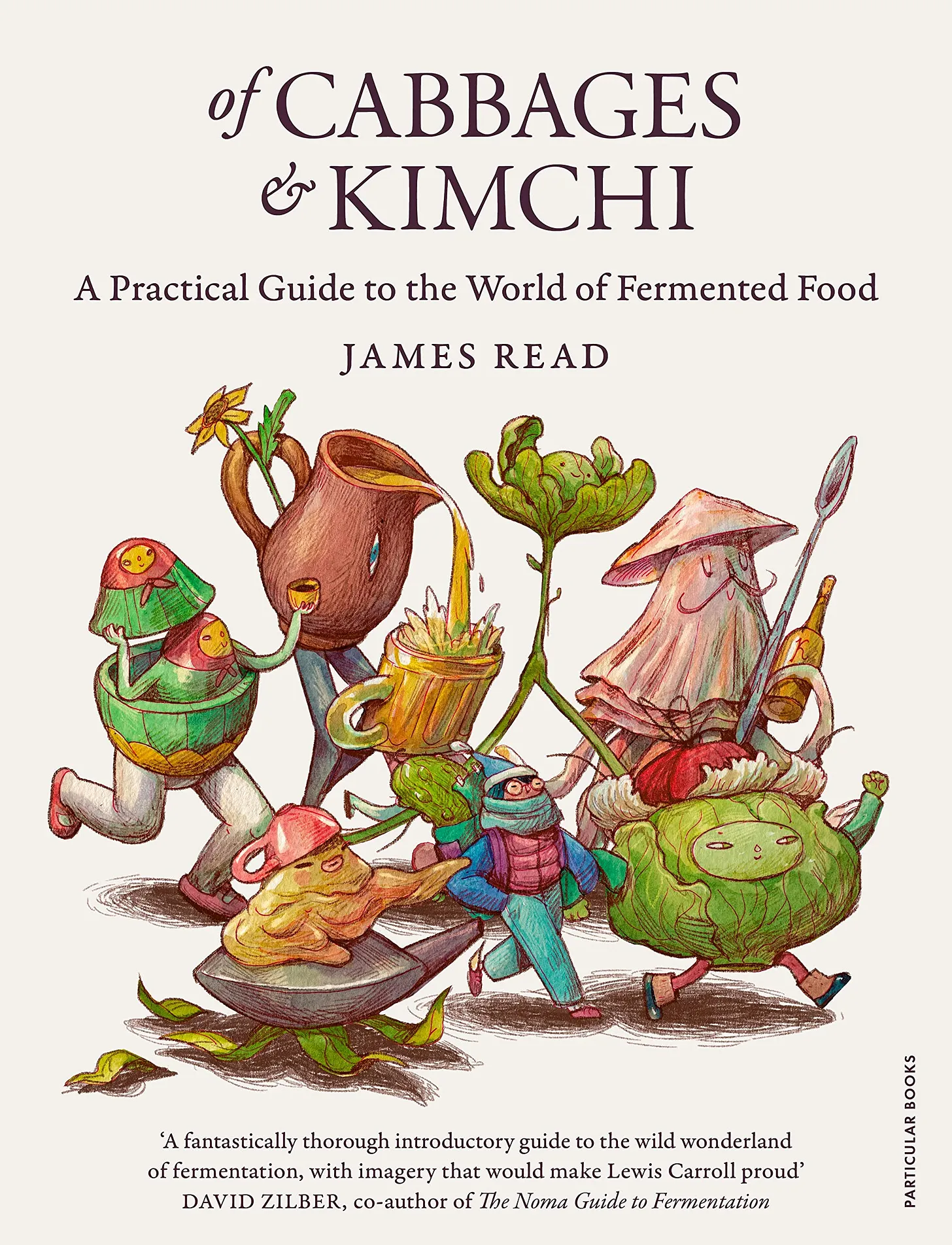
COURGETTES!
It’s glut time and we’re talking things to do with courgettes. I read something funny about the American Deep South, where in some towns, you should never leave your car windows open for fear someone will leave a bag of courgettes (zucchini) on your back seat. I have lived in English villages where bags of courgettes would be left on your doorstep. We talked about the tendency to grow too many courgette plants. Something to bear in mind: the modern F1 hybrids can be extremely productive, and one plant is probably enough for a small household (1-2 people) unless you like to eat a lot of courgettes. Our courgettes are in full (but modest) production. We are growing a yellow 'Shooting Star' and a climbing Trombetta D’Albenga. They both have fairly dense flesh.
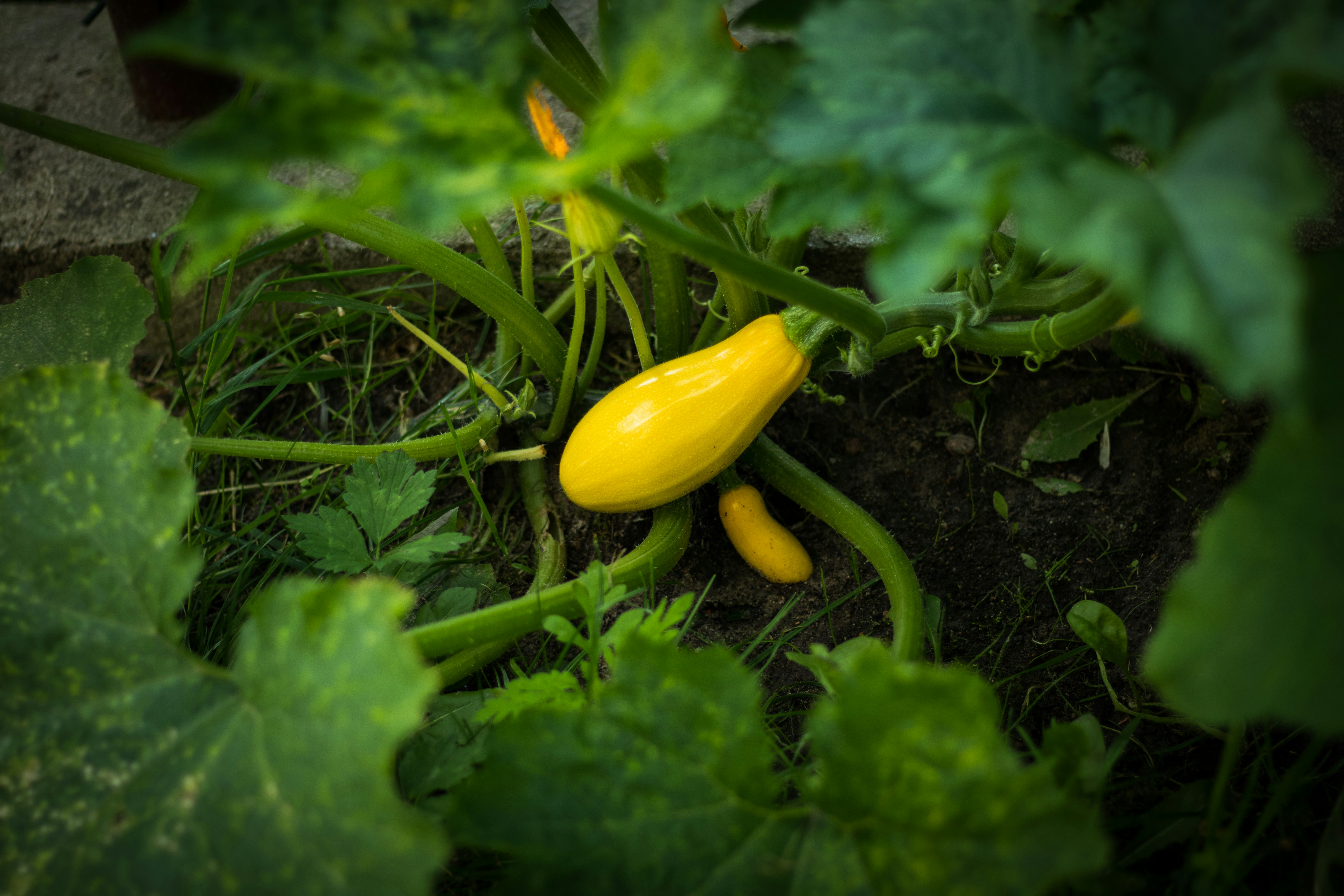
We had a lovely chat about courgettes, with listeners messaging us about their favourite recipes. Regular contributor Victoria Whitwell is of Italian descent. Her suggestion to slowly cook sliced courgette in olive oil until it collapses into soft deliciousness is a perfect example of the wonderful way Italians treat vegetables. Rachel Roddy has a plethora of courgette (zuccini in Italian) recipes on the Guardian website; use the search engine to find them. I like a recipe for courgettes with bacon and pasta on her old ‘Rachel Eats’ site.
Courgettes take on the flavours of everything they are paired with. They are great roasted with other vegetables or alone, and can be added to pasta sauces, pickles, soups, stews, and curries. “Imagine how ‘pale green’ might taste” is what I’d say to anyone wondering what they are like. We discussed different varieties of courgettes, some of which have denser flesh and a lower moisture content, whilst others can be quite wet and need drying/ squeezing if you plan to use them in baking. Look for courgette cakes flavoured with chocolate or lime (Nigella has a recipe in How To Be a Domestic Goddess). Years ago, I was served a fantastic slice of courgette cake iced with lime cream cheese in the cafeteria of my local hospital. Another listener described her recipe for a savoury bread-like courgette loaf. I’d also like to bake courgette scones with cheese or chives. Letitia Clark’s Courgette Ginger Cake with Lemon, Mascarpone and Yoghurt Icing is a guest recipe on Nigella’s site. It’s great.
TIP: A carrot cake recipe can be turned into a courgette cake. Just ensure your courgettes aren’t wetter than the original grated carrots.
Courgettes are good eaten raw, very finely sliced, but check they aren’t bitter first. (This advice applies to courgettes that are going to be cooked too.) Some courgettes become bitter because of an overproduction of plant defence chemicals called cucurbitacins. This will upset your stomach so chuck out the bitter ones.
I bathe finely sliced courgette and cucumber in a dressing made from mint (I like to use different mints, i.e. spearmint, apple, pear, orange), sliced Granny Smith apple, a little garlic, olive oil, lemon or lime juice, a few capers, and salt. I blitz the dressing in my little Kenwood mini-chopper. This keeps in the fridge for several days (I have left it for 3!) without getting watery as long as you use very firm courgettes and cucumbers. Here’s a photo:
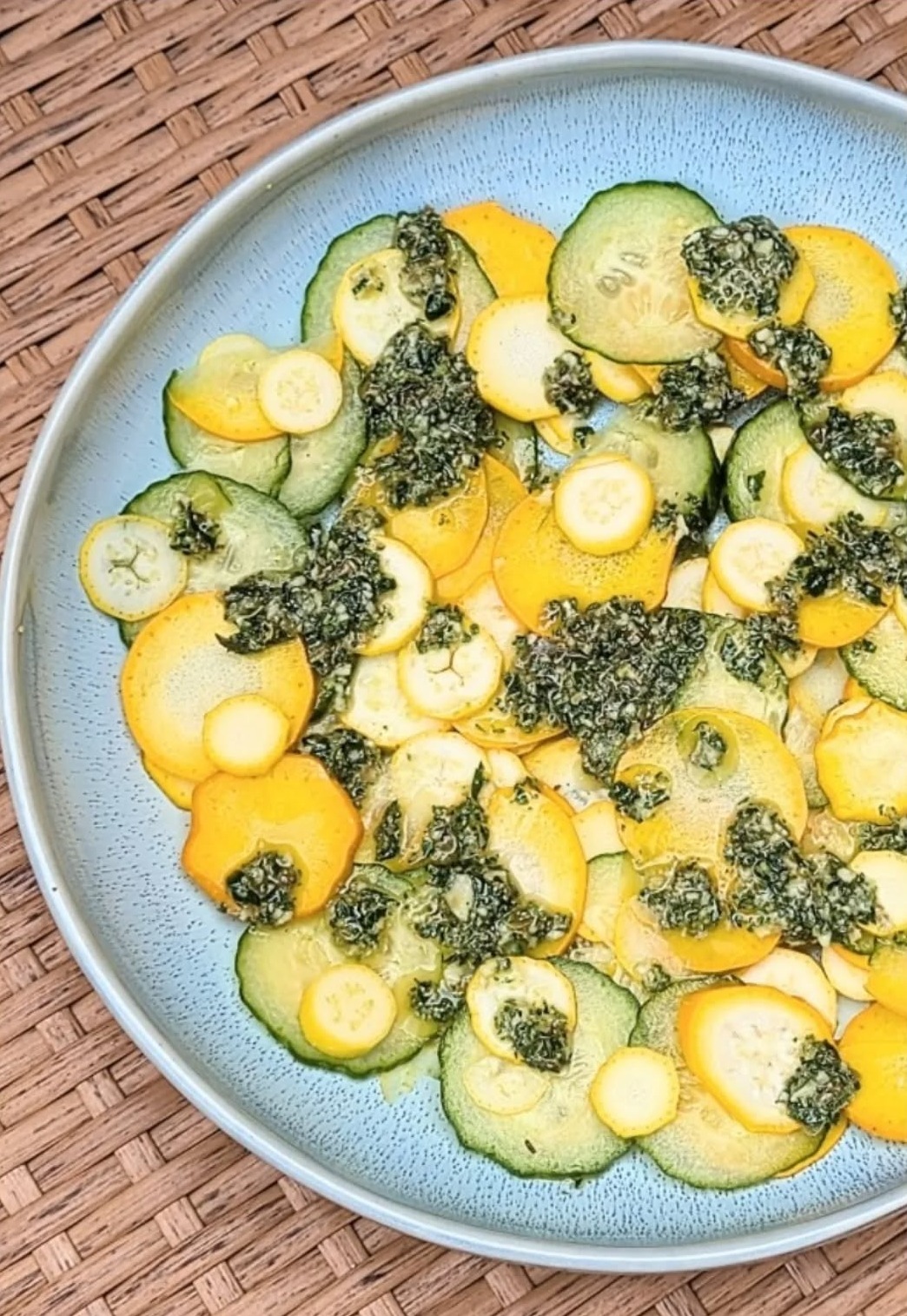
Last year I made this courgette, lime and chilli soup, tipping in half a bag of Waitrose ready-cooked quinoa, black rice and barley. Here’s a terrible photo:
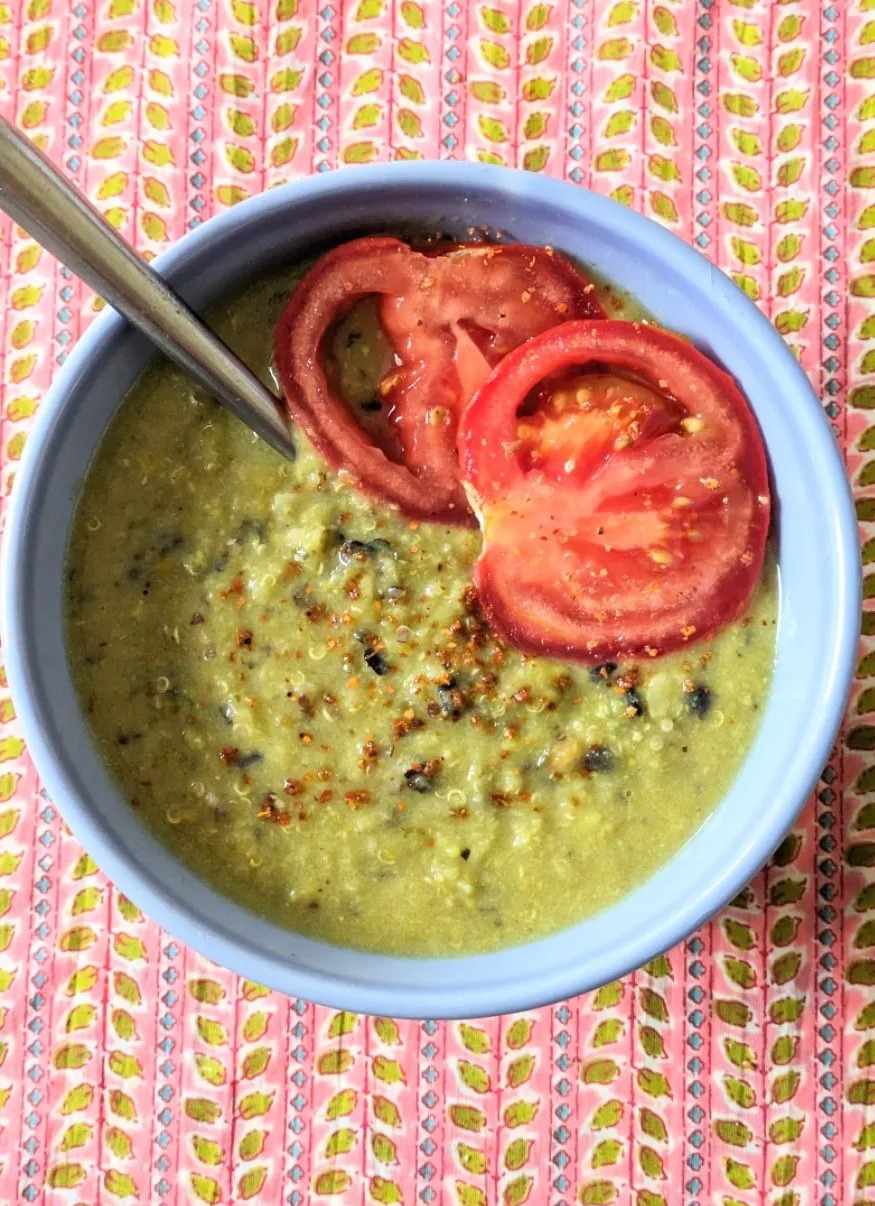
Courgette and crab are a beautiful, delicate combination. Try them in a risotto with a little marjoram and sorrel.
Greek courgette fritters are God tier. I like to add sorrel to the dill and mint. I frequently bang on about , Michael Procopio’s fabulous newsletter, and today is no exception! Read his piece about Kolokythokeftedes (Zucchini Cakes). I didn’t even attempt to pronounce its name on the radio because I’d sound like I am answering a dentist when she's elbow-deep in my numbed mouth. (My other analogy is too rude.)
The Courgette and Mint Curry from Urvashi Roe sounds great. It’s a simple fried technique; a matter of minutes. Urvashi has lots of courgette recipes on her site.
Asma Khan, chef-patron at Darjeeling Express in London, has a recipe for an easy courgette sabzhi and so lovely piled into a flatbread to be eaten with salad and chutney. I make a courgette and cucumber raita, substituting 30% of the cucumber by weight. Choose softer courgettes for this.
Calabacitas a la Mexicana (Courgettes Mexican Style) is an easy casseroled mix of courgettes, corn, tomatoes and coriander from Karla Zazueta, author of Nortena about the food of Northern Mexico and a website called Mexican Food Memories.
I often roast chunks of courgette in olive or sunflower oil with chile powder, lime juice, salt, a little Mexican oregano (Lippia graveolens, buy online from Cool Chile or grow yourself) and cumin.
Nigel Slater offers useful advice when roasting courgettes in this recipe. “Water-rich vegetables, such as courgettes, need a flat baking sheet and a blast in a hot oven to roast if they are to brown appetisingly. Too low a setting or a deep-sided dish and they will steam in their own juices and refuse to even slightly caramelise,” he says. His courgettes are roasted with honey and aromatics, and served with ricotta, pine nuts and sultanas.
For more details of Suffolk Sound Radio, including scheduling, click here.



